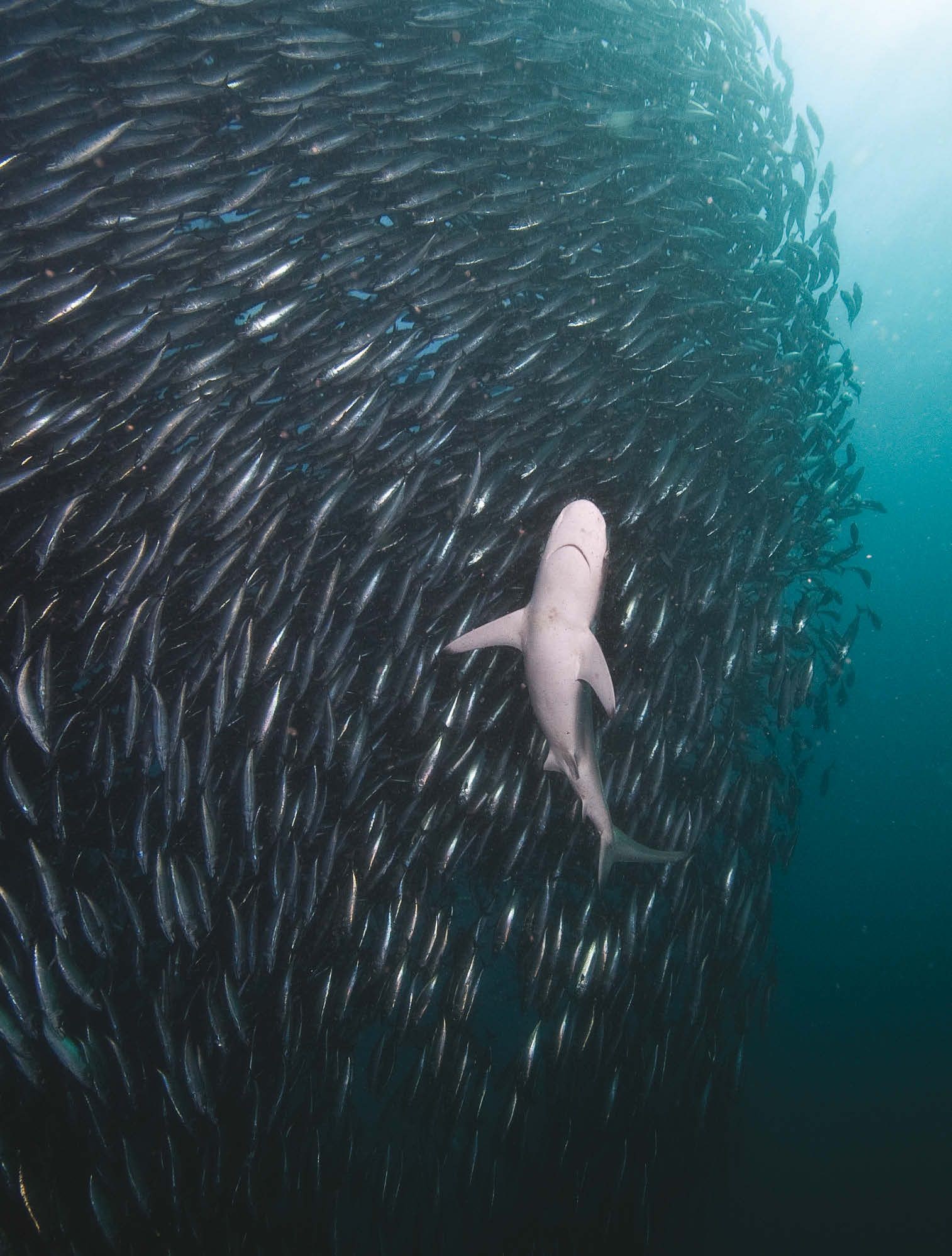
LESLEY ROCHAT f LESLEYROCHATPHOTOGRAPHY.COM f SHARKWARRIOR.COM
There’s no doubt that witnessing a humpback whale breaching only a few metres from you, or swimming with dolphins or sharks in the midst of a feeding frenzy such as the sardine run, can be a transformational experience. It certainly has been for me, to the extent that for the past 25 years I’ve gone in search of such encounters.
Planning to see them used to be simple: the animals were known to be in an area at a specific time of year, so I could schedule my travel calendar accordingly. However, in recent times this has proven no longer 100 per cent reliable, because climate change is playing havoc with the migratory patterns of many big marine animals. To get a grip on these changes, understanding why animals migrate becomes useful. Aristotle once said that “nature does nothing uselessly”, and this certainly applies to the habit of migration, which is motivated by a need for food, for more favourable living conditions, or for breeding — all vital for the survival of the species. Climate change, however, is causing some alarming changes to our beautiful big blue. Many marine animals thrive in very specific ocean temperatures; a steady rise in these has resulted in more than 80 per cent of marine life migrating to different places, many forced to change their breeding and feeding patterns. Some species have migrated almost 1000 kilometres from where they were abundant just a few decades ago. Sadly, some may not be able to adapt quickly enough and risk extinction. This is a global issue, but I have witnessed changes along our coastline here in South Africa, which stretches for over 2000km.